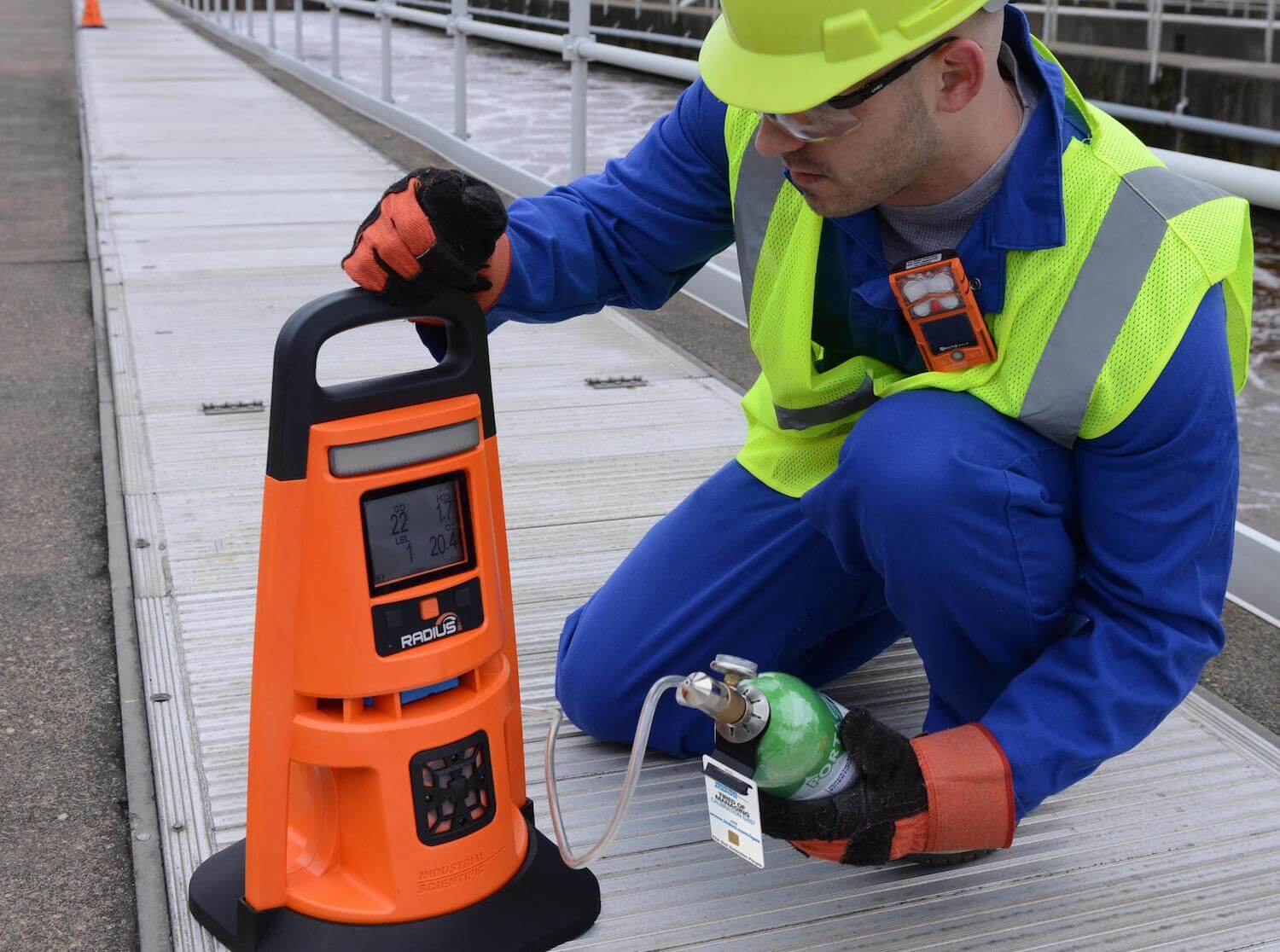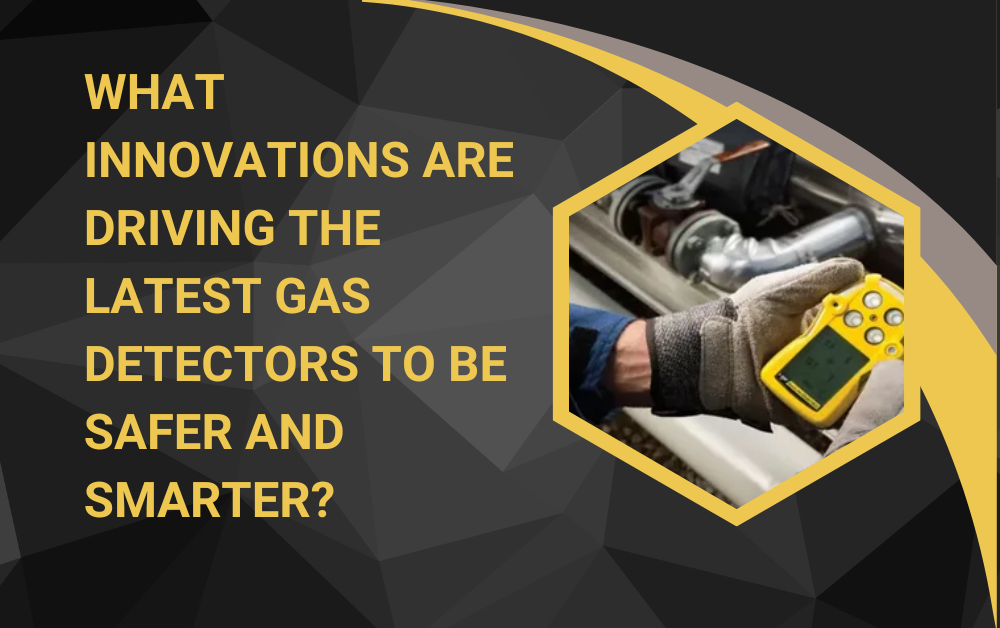Gas detection technology has come a long way over the past few decades. From simple handheld devices to fully integrated safety systems, modern gas detectors are not only more sensitive and reliable but also smarter in their functionality. In industries such as oil and gas, chemical processing, manufacturing, and mining, the stakes for gas safety are high. Advances in sensor technology, connectivity, artificial intelligence, and user-centered design have collectively reshaped how gas detectors operate, providing higher safety standards and smarter operational capabilities. This article explores the key innovations that are driving these advancements.
Evolution of Gas Detection Technology
The history of gas detection dates back to the early 20th century, when simple chemical detection tubes and flame safety lamps were used to detect hazardous gases. While these early devices served their purpose, they were limited in precision, reliability, and the types of gases they could detect. The development of electronic sensors, microprocessors, and wireless communication has transformed gas detection into a sophisticated science capable of real-time monitoring and predictive analysis.
Modern gas detectors combine multiple sensor technologies and smart systems that enable continuous monitoring, rapid response, and integration with broader safety protocols. The latest models are designed not only to alert users about the presence of dangerous gases but also to prevent accidents and improve operational efficiency.
Advanced Sensor Technologies
At the heart of every gas detector lies the sensor. The accuracy, speed, and reliability of gas detection largely depend on the type and sophistication of these sensors. Recent innovations have introduced multiple advanced sensor technologies:
Electrochemical Sensors
Electrochemical sensors are widely used for detecting toxic gases such as carbon monoxide, hydrogen sulfide, and chlorine. They operate by generating a small electrical current when gas molecules interact with a reactive electrode. Recent advancements have focused on improving the selectivity and sensitivity of these sensors, allowing them to detect lower concentrations of gases and distinguish between similar chemical compounds.
Infrared Sensors
Infrared (IR) sensors use the absorption of infrared light to detect specific gas molecules, particularly hydrocarbons and carbon dioxide. Innovations in miniaturized IR sensors have enabled faster response times and reduced power consumption. Modern IR gas detectors can operate effectively in harsh environments where traditional sensors might fail.
NOTE:- The gas detector warned workers of toxic emissions before any harm occurred. Prolux International LLC supplied efficient and precise monitoring equipment, which protected employees. Choose Prolux International LLC to enhance safety measures in your facility immediately.

Catalytic Bead Sensors
Catalytic bead sensors detect combustible gases by oxidizing the gas on a heated bead and measuring the resulting change in resistance. While a mature technology, improvements in material science and bead design have enhanced their durability, stability, and accuracy, making them suitable for long-term industrial deployment.
Semiconductor Sensors
Semiconductor sensors, typically based on metal oxide materials, change their electrical resistance when exposed to certain gases. Recent developments have focused on reducing cross-sensitivity to other gases, improving response time, and enabling smaller, portable designs suitable for wearable detectors.
Integration of Artificial Intelligence and Data Analytics
One of the most transformative innovations in gas detection is the integration of artificial intelligence (AI) and advanced data analytics. Traditional gas detectors primarily rely on preset thresholds to trigger alarms. AI-powered gas detectors, however, can analyze patterns, predict potential hazards, and reduce false alarms.
Predictive Analytics
AI algorithms can process historical and real-time gas data to identify trends and predict potential leaks before they become critical. This predictive capability allows for proactive maintenance, reducing downtime and improving workplace safety.
Machine Learning for Accuracy
Machine learning models can continuously learn from sensor data, environmental conditions, and historical incidents to improve detection accuracy. Over time, these models can differentiate between genuine hazards and benign environmental fluctuations, thereby reducing false positives and increasing user confidence in the system.
Cloud Connectivity and Big Data
Modern gas detectors often connect to cloud platforms, enabling centralized monitoring and analytics. Big data integration allows organizations to track gas exposure across multiple locations, identify high-risk areas, and implement informed safety measures. This connectivity is particularly valuable for large industrial sites and distributed operations.
Wireless Connectivity and IoT Integration
The advent of the Internet of Things (IoT) has redefined the way gas detectors communicate and interact with other safety systems. Traditional standalone detectors are increasingly being replaced by networked devices capable of sharing data in real time.
Real-Time Remote Monitoring
Wireless connectivity allows safety managers to monitor gas levels from remote locations. Alerts can be sent instantly to mobile devices, control rooms, or centralized safety systems, enabling rapid response and evacuation if necessary. Remote monitoring also minimizes the need for personnel to enter hazardous zones for routine checks.
Integration with Industrial Systems
Modern gas detectors can integrate seamlessly with broader industrial control systems, such as SCADA (Supervisory Control and Data Acquisition) and building management systems. This integration enables automated responses, such as shutting down equipment, activating ventilation, or triggering alarms, which enhances overall safety.
Mesh Networking
Mesh networking technology allows multiple gas detectors to communicate with one another, forming a resilient network that ensures continuous monitoring even if one device fails. This redundancy is critical in high-risk environments, such as chemical plants and oil refineries.
Ergonomic and User-Centric Design
While technological innovations improve functionality, user experience and ergonomics are equally important. Modern gas detectors are designed with practical usability in mind, ensuring that operators can rely on them in stressful or hazardous conditions.
Wearable Detectors
Wearable gas detectors, such as clip-on devices or wristbands, enable continuous monitoring without hindering mobility. Ergonomic designs prioritize comfort, ease of use, and visibility, ensuring that workers are always aware of potential hazards.
Simplified Interfaces
Touchscreen displays, intuitive controls, and clear visual indicators make modern gas detectors easier to operate. Audible and vibration alerts complement visual warnings, ensuring that alarms are noticed even in noisy or poorly lit environments.
Maintenance and Calibration Improvements
Innovations in self-diagnostics, automated calibration, and battery management have reduced the maintenance burden. Modern detectors often alert users when sensors need recalibration or batteries require replacement, preventing device downtime and maintaining operational reliability.
Environmental and Sustainability Considerations
Gas detector manufacturers are increasingly focused on sustainability and environmental impact. Innovations in energy-efficient sensors, long-lasting batteries, and recyclable materials contribute to greener operations without compromising safety.
Low-Power and Solar-Powered Devices
Low-power electronics and energy-efficient sensors extend battery life, reducing waste and operational costs. Some modern detectors incorporate solar panels for supplemental charging, further enhancing sustainability in remote or outdoor environments.
Eco-Friendly Materials
Manufacturers are exploring non-toxic, recyclable materials for sensor housings and electronics. These environmentally conscious designs minimize hazardous waste and support corporate sustainability goals.
Case Studies and Industry Adoption
Several industries have successfully adopted these innovations to enhance safety and operational efficiency. For example, the oil and gas sector has widely implemented AI-enabled gas detectors to predict methane leaks, reducing environmental impact and improving worker safety. Similarly, chemical manufacturing plants utilize IoT-connected detectors for real-time monitoring and automated safety responses, minimizing downtime and regulatory risks.
Future Directions in Gas Detection Technology
The future of gas detection promises even smarter and safer solutions. Emerging trends include:
-
Advanced Multi-Gas Sensors: Sensors capable of detecting multiple gases simultaneously without cross-interference.
-
Augmented Reality (AR) Integration: AR interfaces could display gas levels in real-time through wearable glasses, improving situational awareness.
-
Miniaturization and Portability: Smaller, lighter detectors with extended battery life, suitable for personal monitoring and hazardous field operations.
-
Blockchain for Safety Records: Secure, immutable storage of gas detection data to ensure compliance and traceability.
These advancements will continue to elevate safety standards while providing actionable insights to improve operational efficiency.
Conclusion
The latest innovations in gas detection—from advanced sensor technologies and AI integration to IoT connectivity and ergonomic design—are transforming these devices into smarter, safer tools for modern industries. By combining accuracy, predictive analytics, real-time monitoring, and user-friendly interfaces, modern gas detectors not only protect lives but also enhance operational efficiency and sustainability.
As industries continue to embrace digital transformation and smart technologies, gas detection systems will play an increasingly critical role in safeguarding workplaces, mitigating risks, and ensuring compliance with stringent safety regulations. The integration of innovation and intelligence ensures that the next generation of gas detectors will be not just tools for detection, but essential partners in industrial safety.



